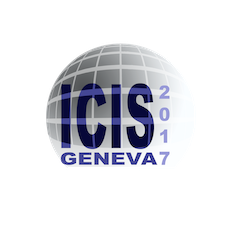Speaker
Description
The ion microbeams ranging from several hundred keV to several MeV have, so far, been formed by a large microbeam system with the total length of about 30 m that comprises an accelerator, a beam transport line and focusing lenses.The installation of the microbeam system in a common experimental room with a typical size of about 4 × 4 × 4m$^{3}$ is difficult. A MeV compact ion microbeam system is developed to enable us to install in the experimental room. In the development a 120 keV compact ion microbeam system, hereafter compact microbeam system [1], is constructed using a three-stage acceleration lens and a duoplasmatron-type ion source with electric power consumption over 500 W and brightness of about 10 Am-2sr-1V-1 at about 1 keV as a prototype of the MeV compact ion microbeam system. A hydrogen ion beam of 2.6 μm in diameter has, so far, been experimentally formed using the compact microbeam system. In parallel with the reduction of the beams diameter the increase of the beam energy is studied on the basis of developing and improving some elemental technologies. An ion source of the small electric power consumption is developed to put it in a small space applied to the high voltage of MV. The present ion source supplies the low energy and the brightness ion beam that are appropriate for the three-stage acceleration lens, whereas it needs large electric power to heat the filament and frequent exchanges of it.The supply of the large electric power is difficult in the MeV compact ion microbeam system. A solution of the reduction of the electric power consumption is to use a PIG ion source with a cold cathode that is generally low electric power consumption and a compact size. However, the PIG ion source has beam energy over several keV and low brightness, while beam energy of less than 1 keV level is required for the compact microbeam system.
In this study, a PIG ion source generating a hydrogen ion beam with low energy, high brightness, and low electric power consumption of less than several keV, over 10 Am-2sr-1V-1, and less than the wattage of several tens, respectively, which matches the demand of the three-stage acceleration lens, is developed to enable us to install it in a high voltage space of the MeV compact ion microbeam system.
The high brightness of ion beam is an important parameter for the compact microbeam system to obtain relatively large beam current at a focused point when an ion beam with a smaller diameter is formed. The extraction of ion beam from high density plasma in a small space in a PIG ion source was considered to be effective to generate the ion beam with the high brightness. The generation of strong magnetic field in the small space is required to realize this consideration. The magnetic field was calculated using a magnetic field calculation code at magnetic circuits with various shapes. It has two coils placed at the both sides of anode in an iron yoke to obtain the strong magnetic field. The magnetic field over 1.5 T in the small space was numerically obtained by applying 800 AT and 400 AT to up and down coils, respectively. The small space for generating plasma is 1 mmΦ × 1.5 mm with the anode of 0.8 mm in thickness. The coil turns of up and down are 800 and 400. The iron rods are used as the return yoke in the magnetic circuit to cool down the coils by the air. The ion source was placed in a test bench. The preliminary experimental results showed that the extracted hydrogen ion beam current and its brightness were measured to be over 10 μA and 20 Am-2sr-1V-1 at about 2 keV and electric power consumption of less than 30 W, which almost satisfies the requirements.
References
[1] Y. Ishii, T. Ohkubo, T. Kojima, T. Kamiya, Nucl. Instr. Meth. B 332 156–159 (2014).
